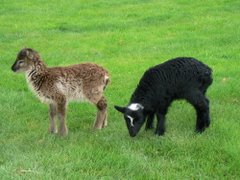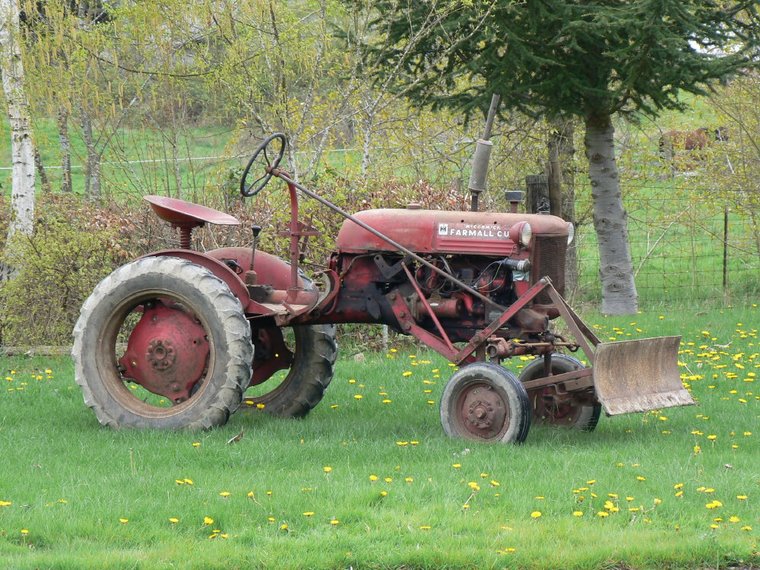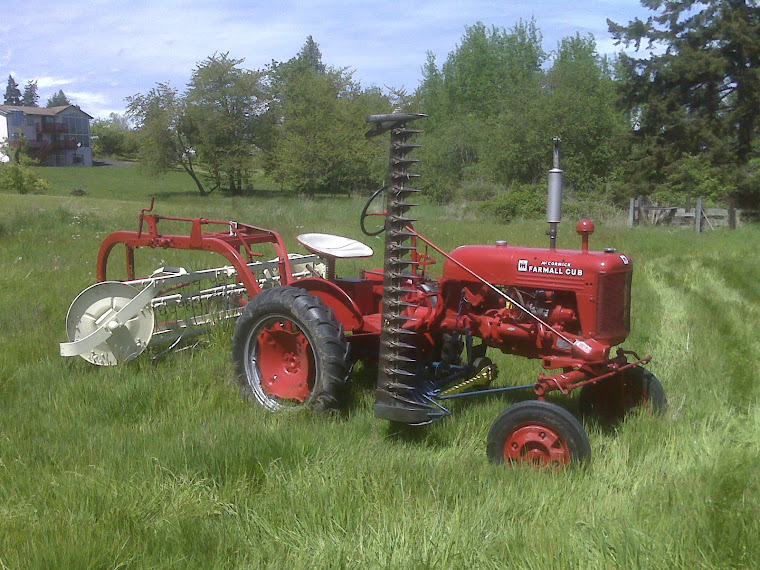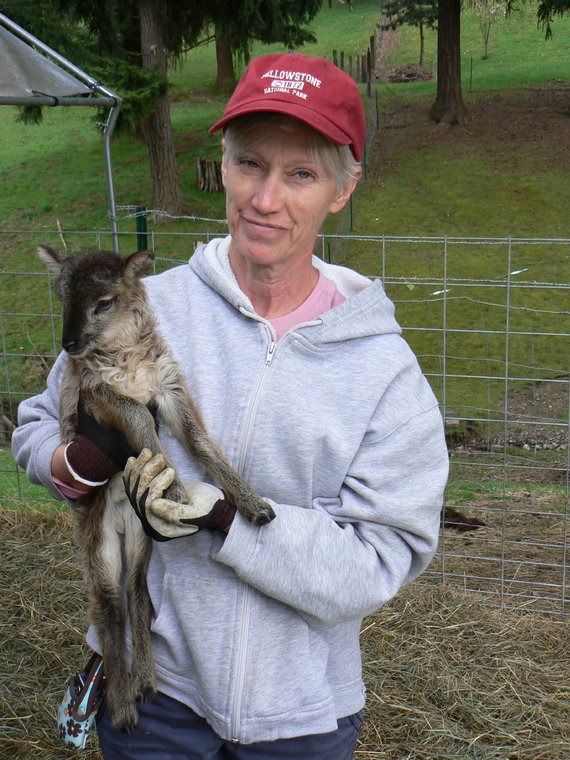My "black and white" Soay sheep development got a big boost this morning. ("Black and White" means homozygous recessive for self-colored dark phase - solid black coat, but also homozygous recessive for white spotting, thus white spots on an otherwise solid black Soay). All my B&W Soays ewes are late lambing this year as my chosen B&W ram, Woodland Creek Chilcoot '07 (below) was born late (July 30) last year so was not mature enough to breed his chosen ewes until about mid-January of 2008.
Woodland Creek Chilcoot '07
(Blue Mountain Bunny X Woodland Creek Pepper).

Note that my hypothesis about how extensive white spotting will be in each generation, (developed from study of a Soay flock in Wales with extensive white spotting) is that it will be roughly additive of the parents white extent. For example, Chilcoot's sire was Woodland Creek Pepper '06 (see below) who has a nice white poll spot.
Woodland Creek Pepper '06
(Blue Mountain Thumper X Sound Soays Kvasir).

Both of Pepper's parents are self-colored blacks with just wisps of white at their poll.
So on to the good news. The good old grand dame of my Black and Whites, Blue Mountain Thumper (who heretofore had produced the most extensively white-spotted black Soay in North America - Thunder) was found out in a corner of the shed on 22-Jun-08 dutifully caring for my best effort yet - a beautifully white-spotted black ewe lamb (now named Athena). See below. Athena has - to the best of my knowledge - the most extensive white spotting of any self-colored black Soay every produced in North America, stealing the "crown", so to speak, from her 2001 half-sister Thunder. (Thunder died her first fall before ever lambing).
Woodland Creek Athena '08
(Blue Mountain Thumper '00 X Woodland Creek Chilcoot '07)

 Athena has white in just the areas that I would have predicted. As the extent of white builds in successive generations, it (typically, not always) starts as a poll wisp, then a poll spot, then poll and forehead spots, then a blaze, then often a "necklace" or wisps at the neckline. Black is retained around the eyes (yeah, like a Panda), tip of nose, ears.
Athena has white in just the areas that I would have predicted. As the extent of white builds in successive generations, it (typically, not always) starts as a poll wisp, then a poll spot, then poll and forehead spots, then a blaze, then often a "necklace" or wisps at the neckline. Black is retained around the eyes (yeah, like a Panda), tip of nose, ears.
The other feature of the white, as I have seen before but is particularly noticeable with Athena's contrasting colors and extent of white, is the length of white hairs compared to black. The white hairs, at any given point, are easily twice as long as adjacent black hairs. On others I see this relative length difference diminsh somewhat as the sheep ages -- by their first fall the white is somewhat longer but not twice as long.
We still have more B&W ewes left to lamb here at Woodland Creek, so I can hardly wait to see what comes next!










